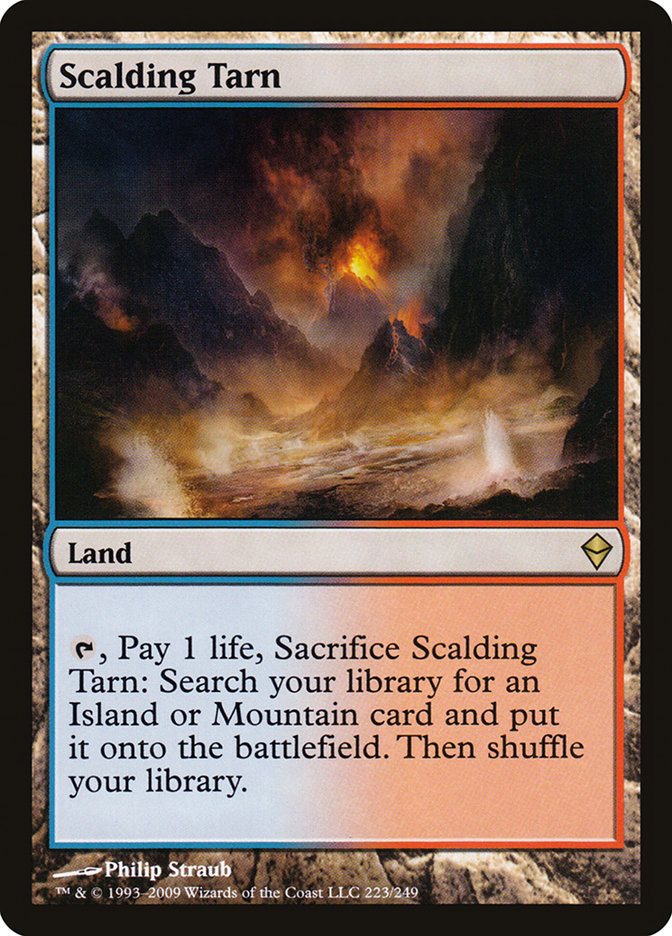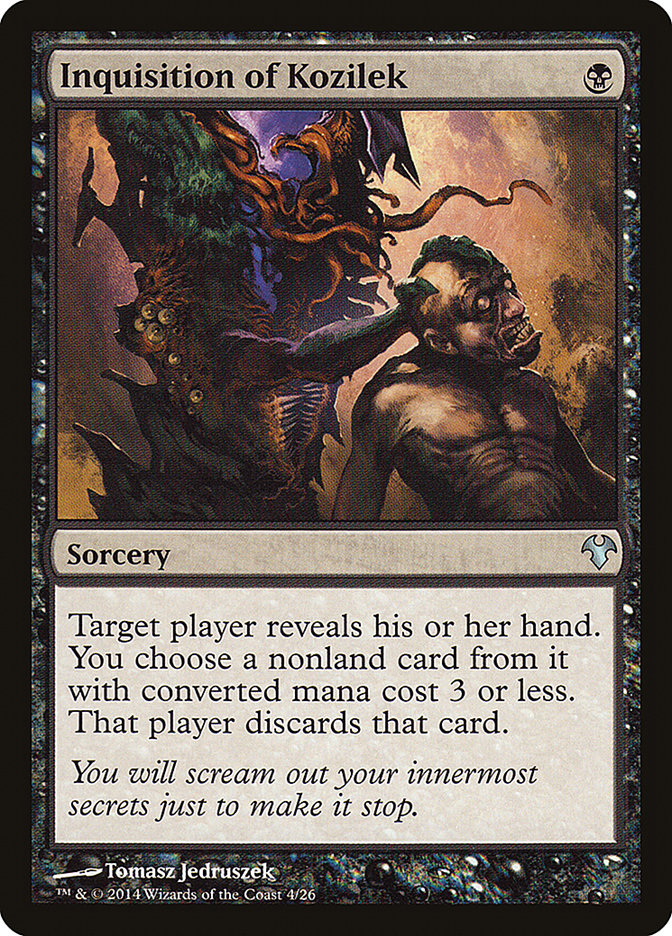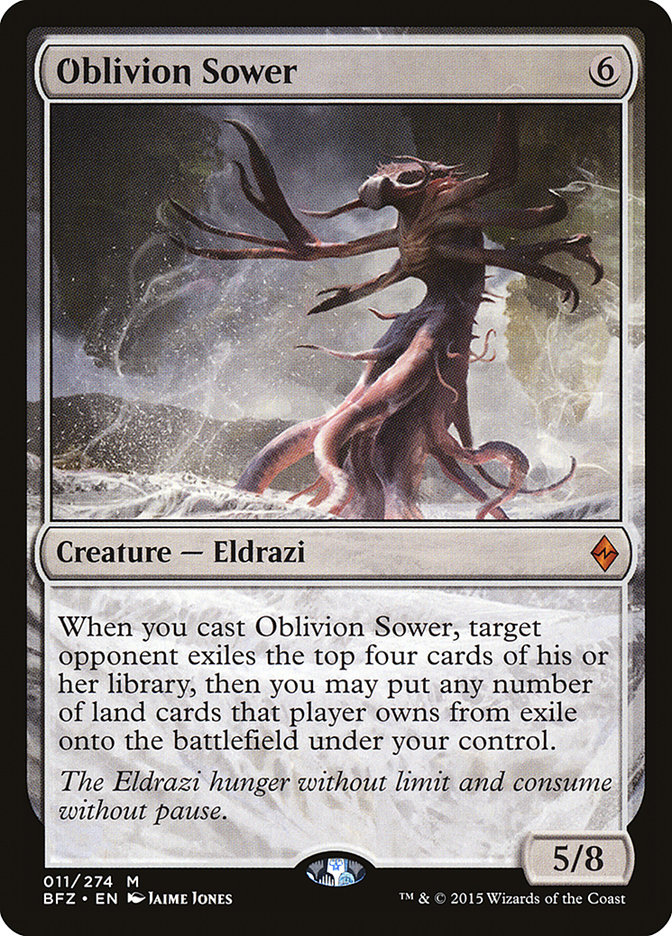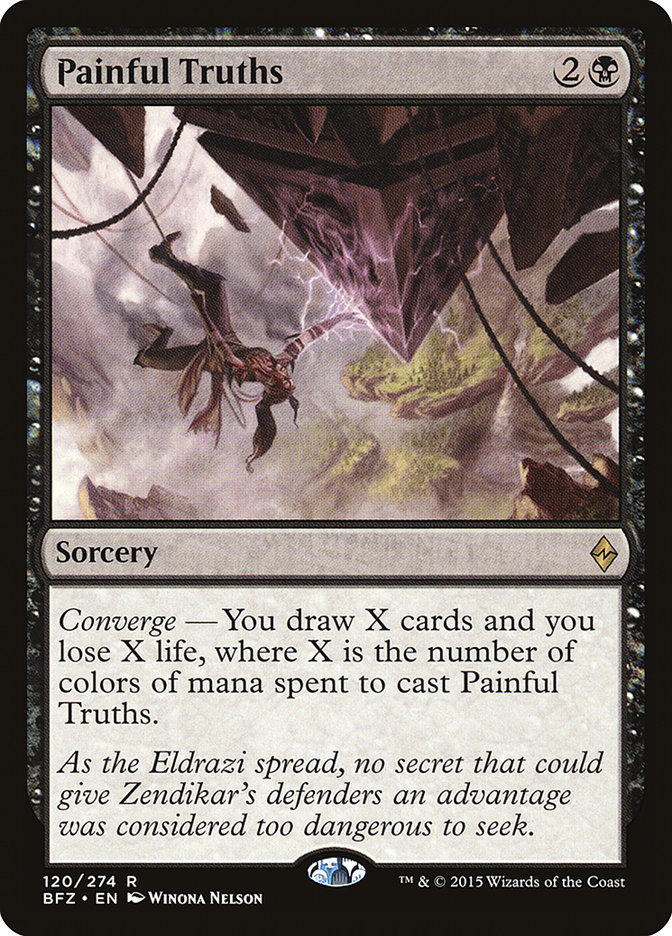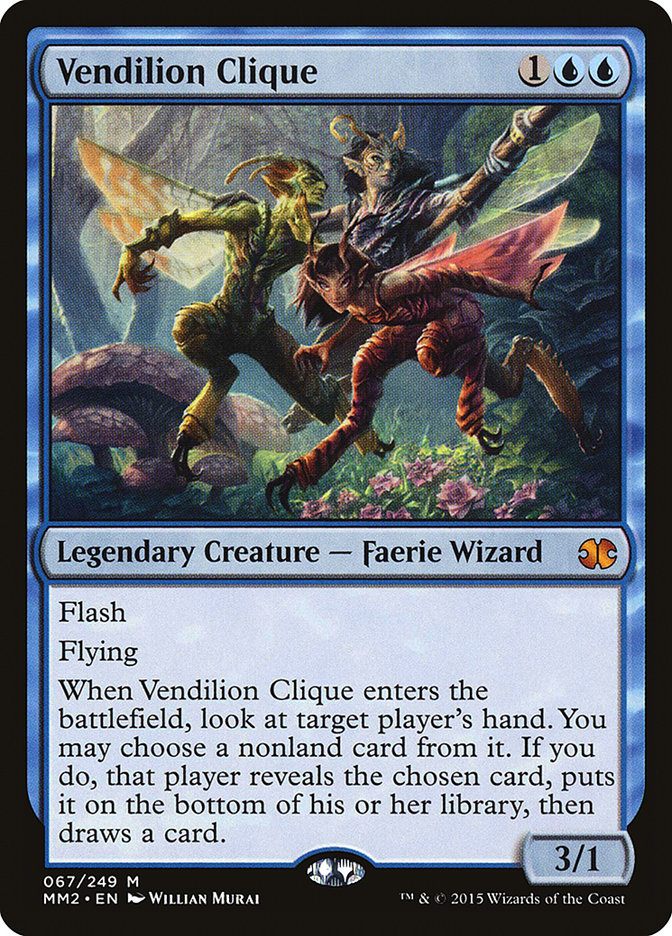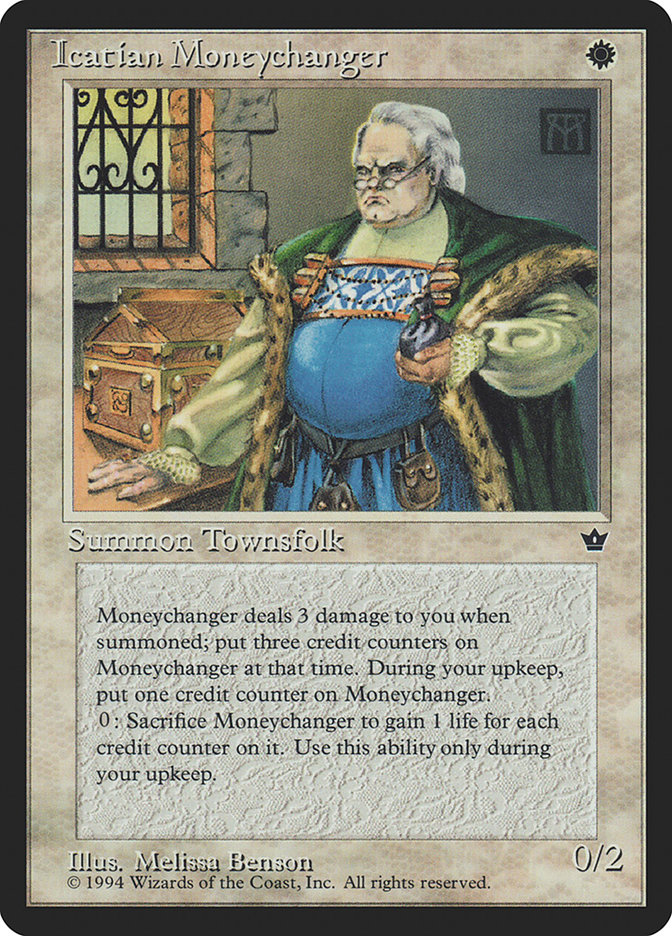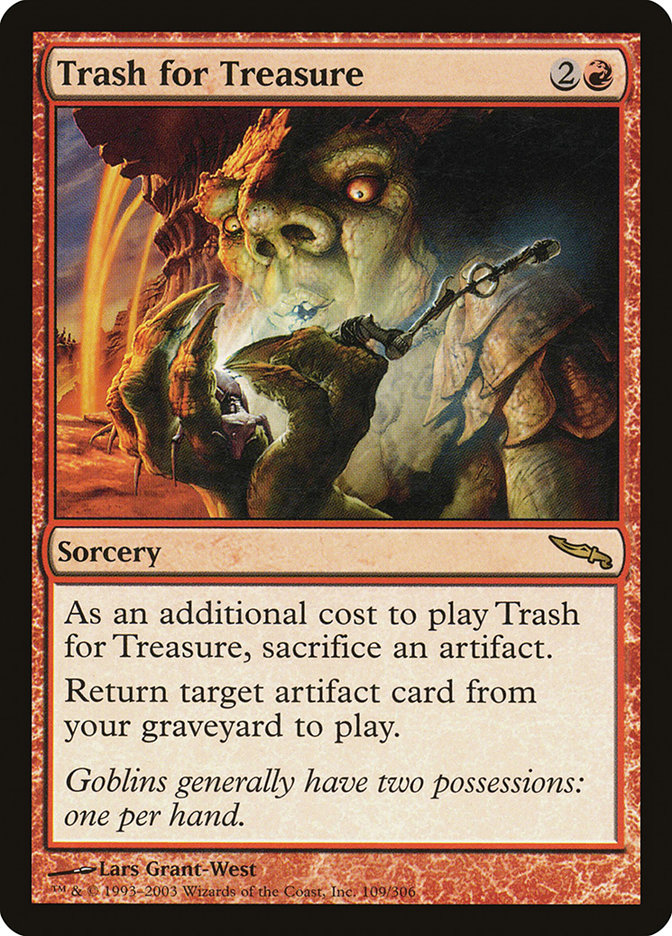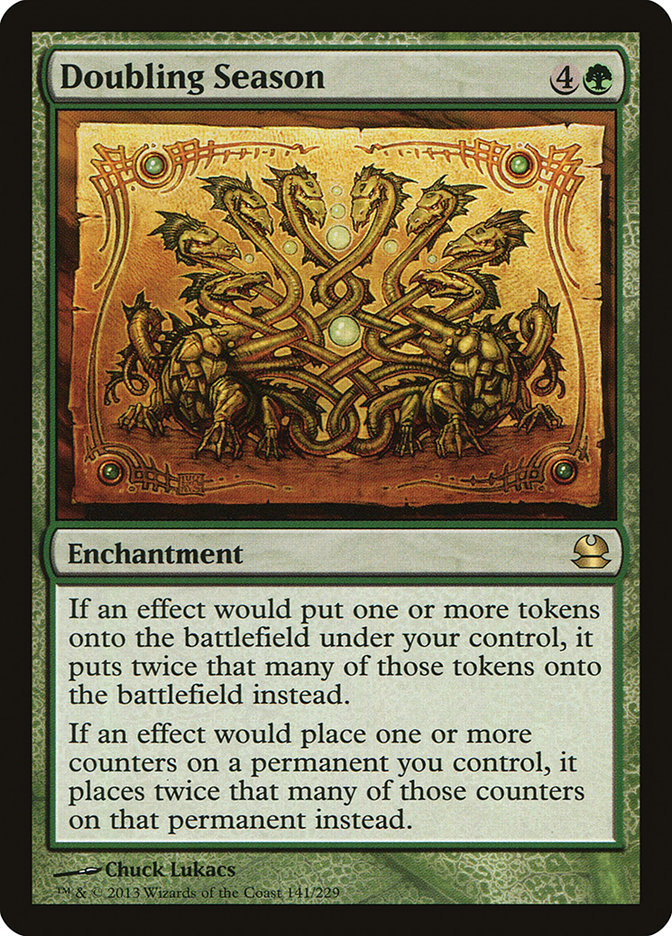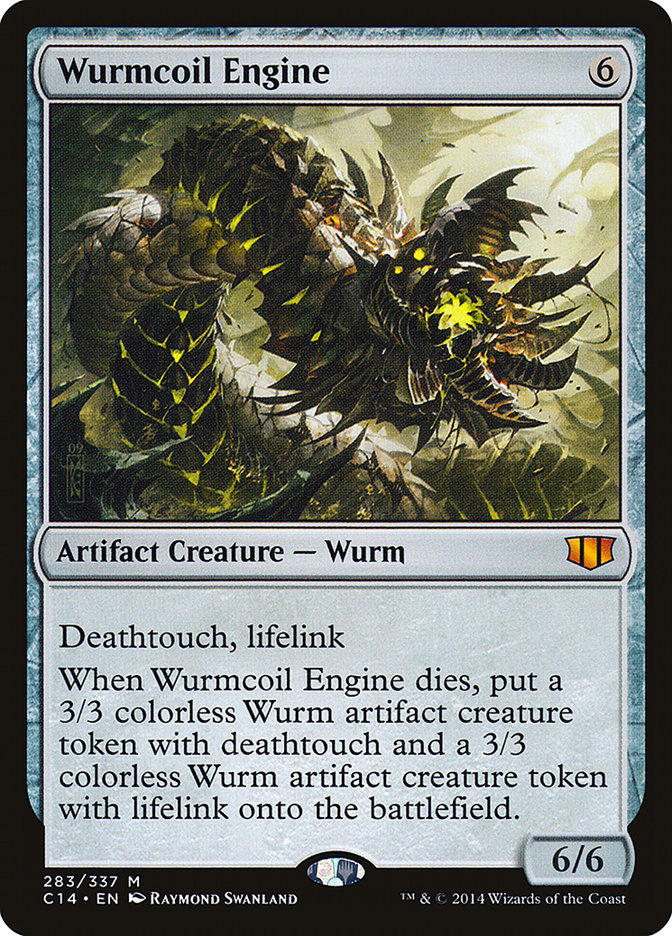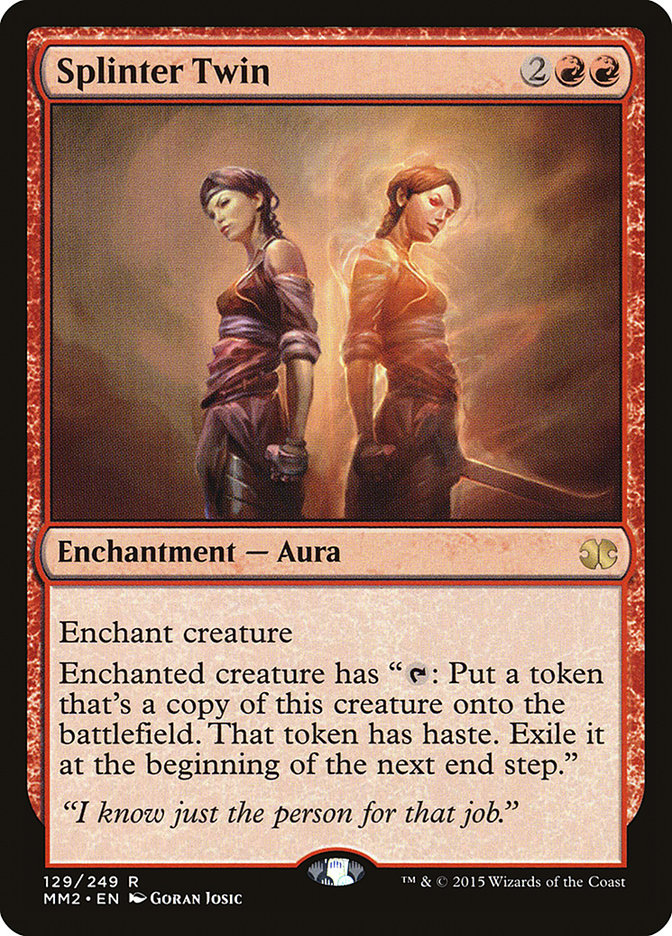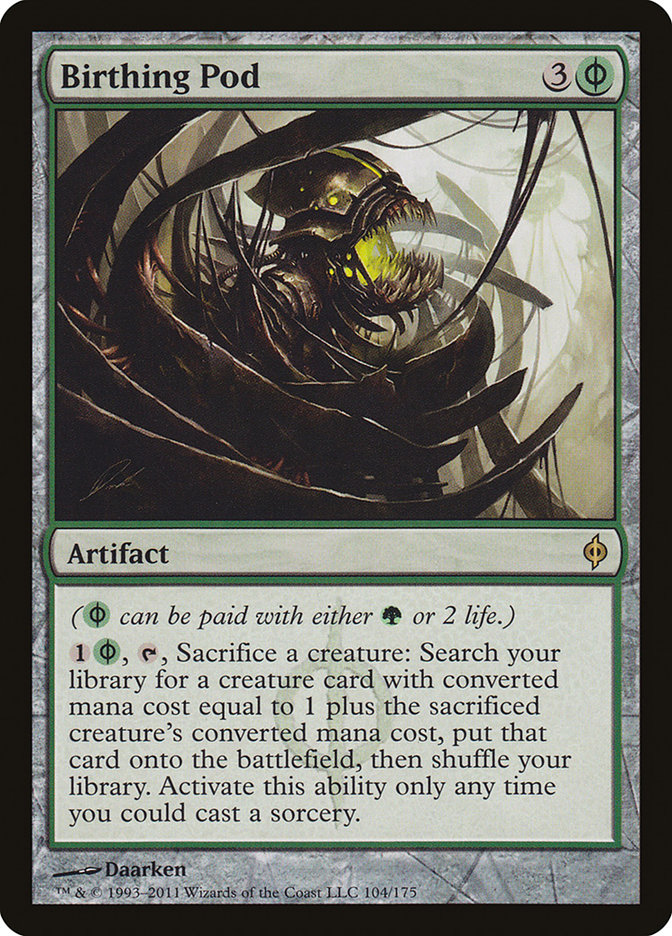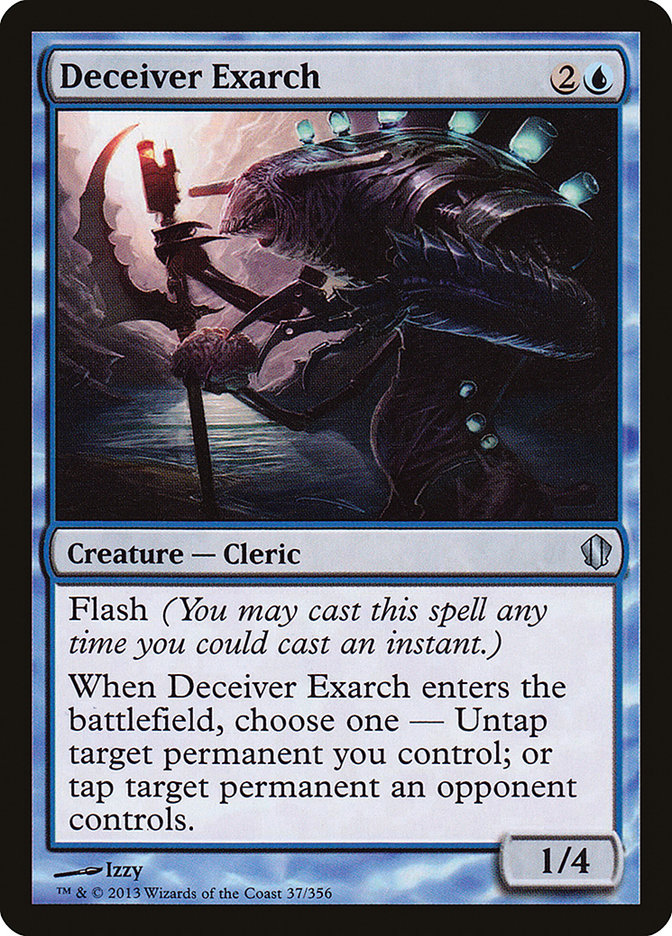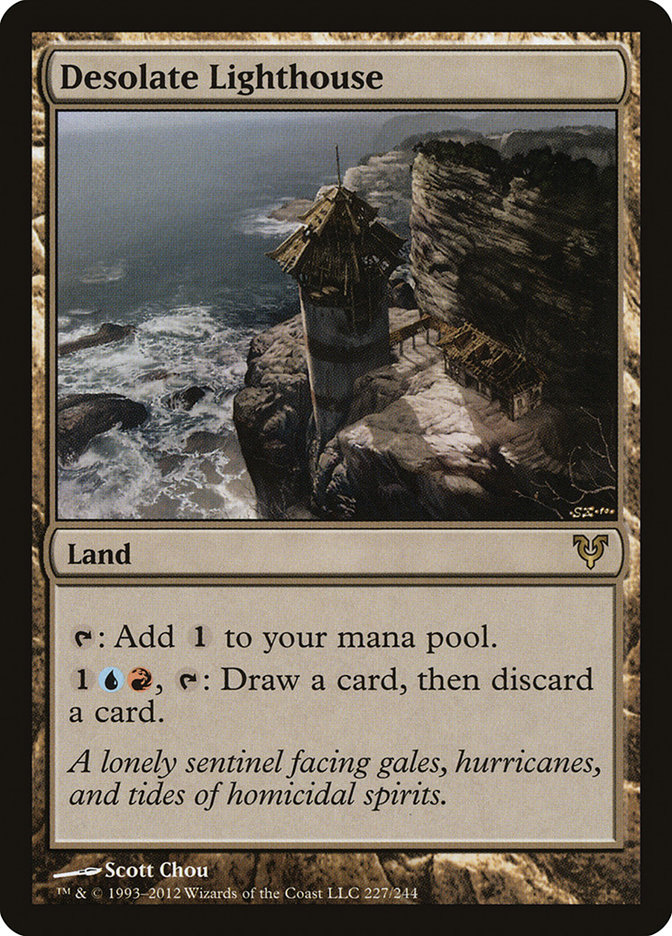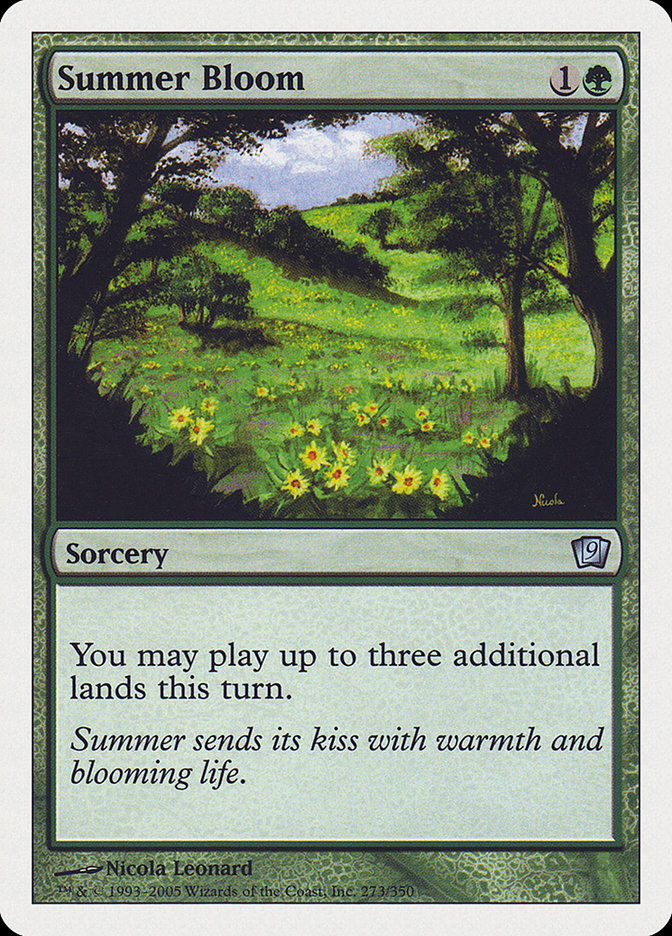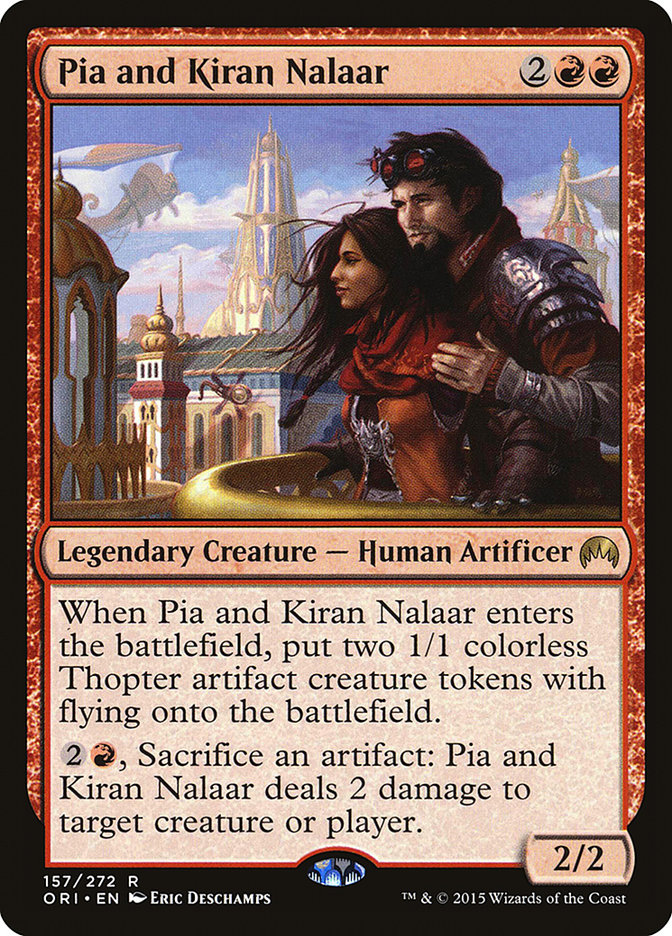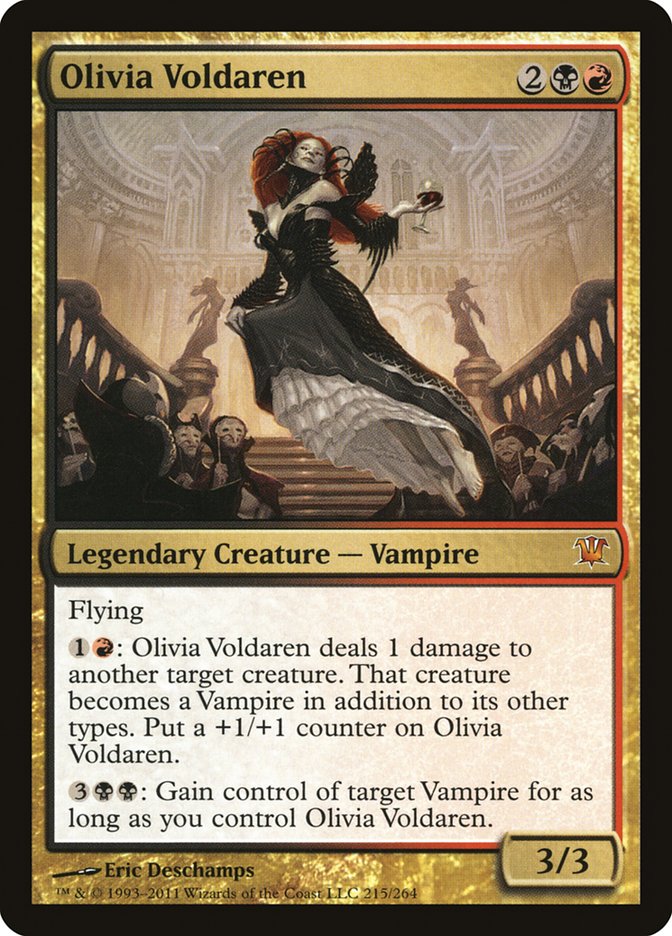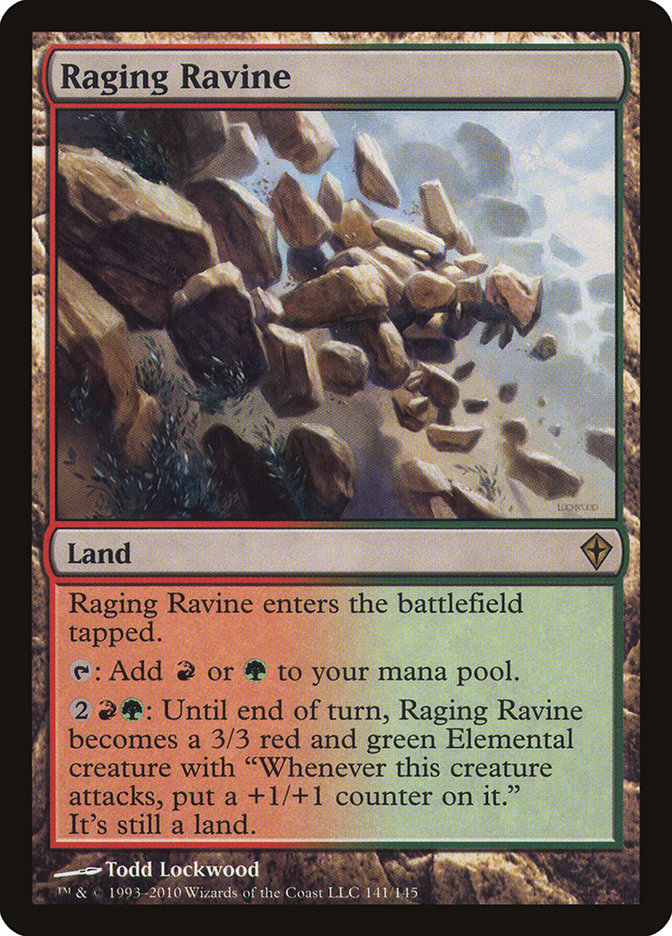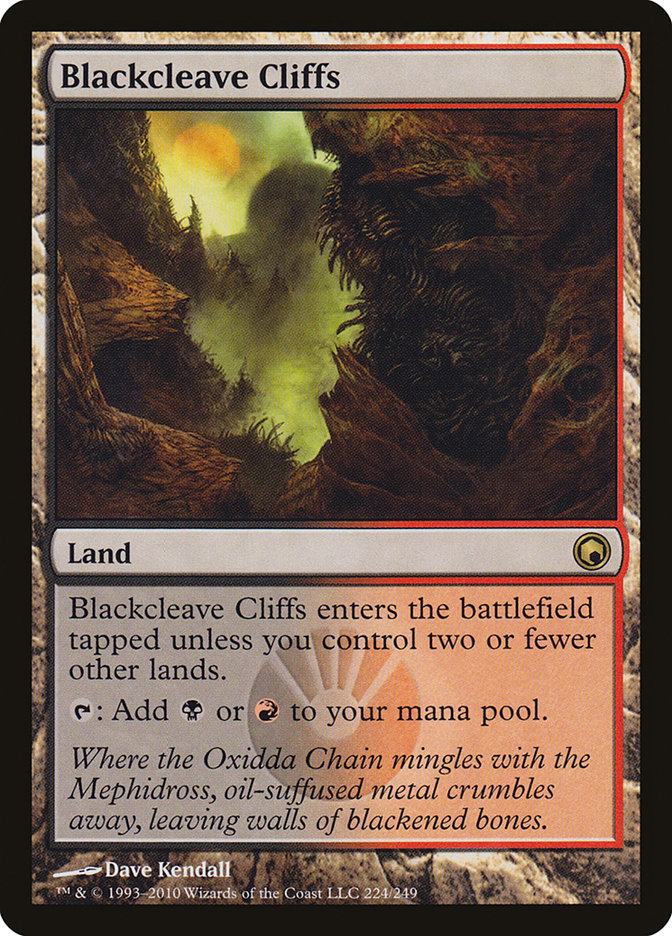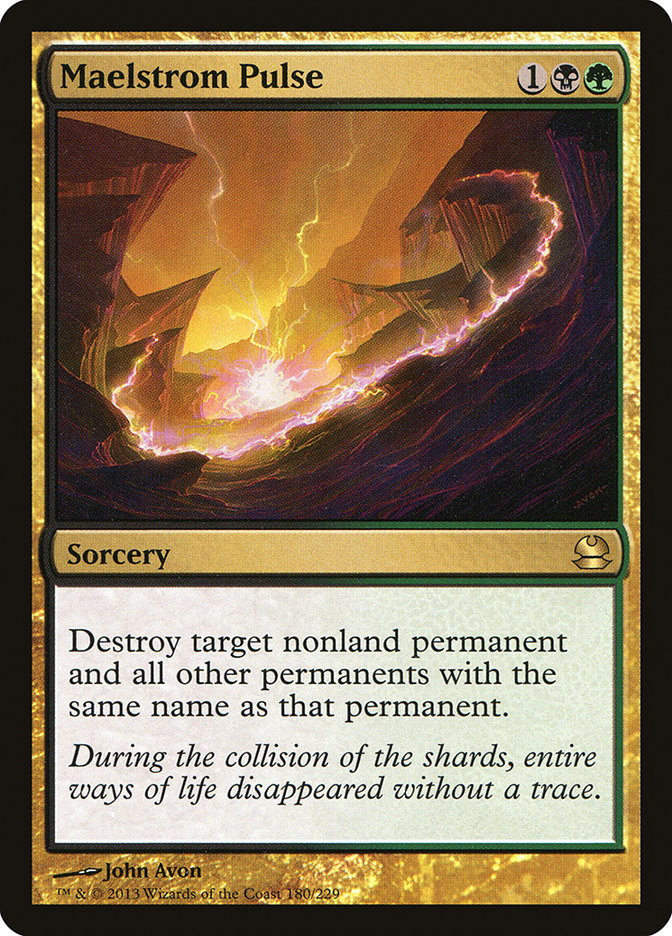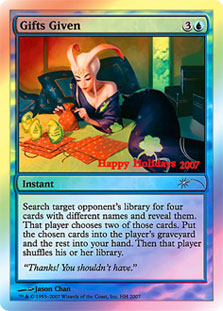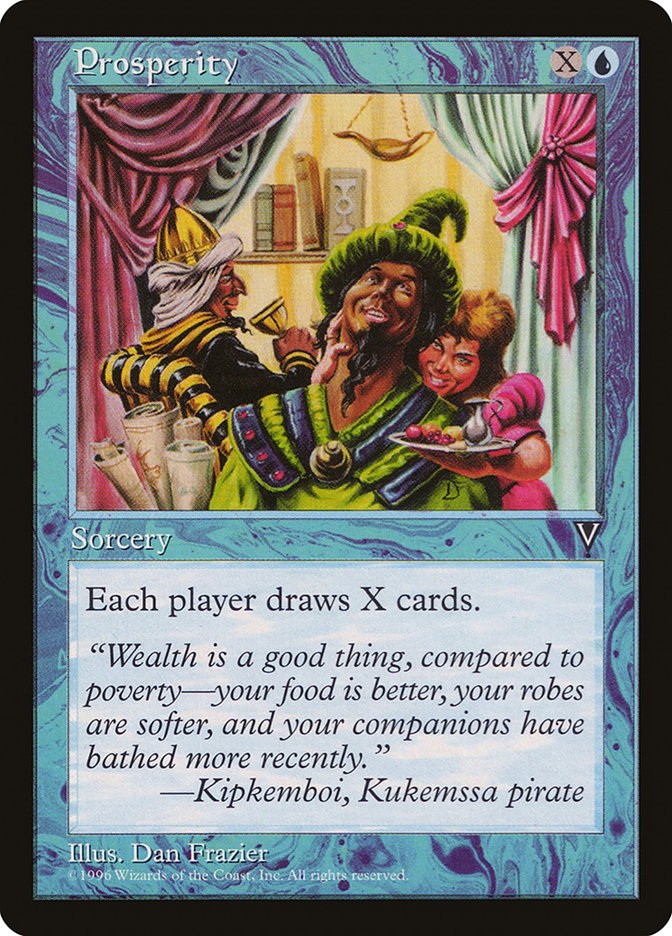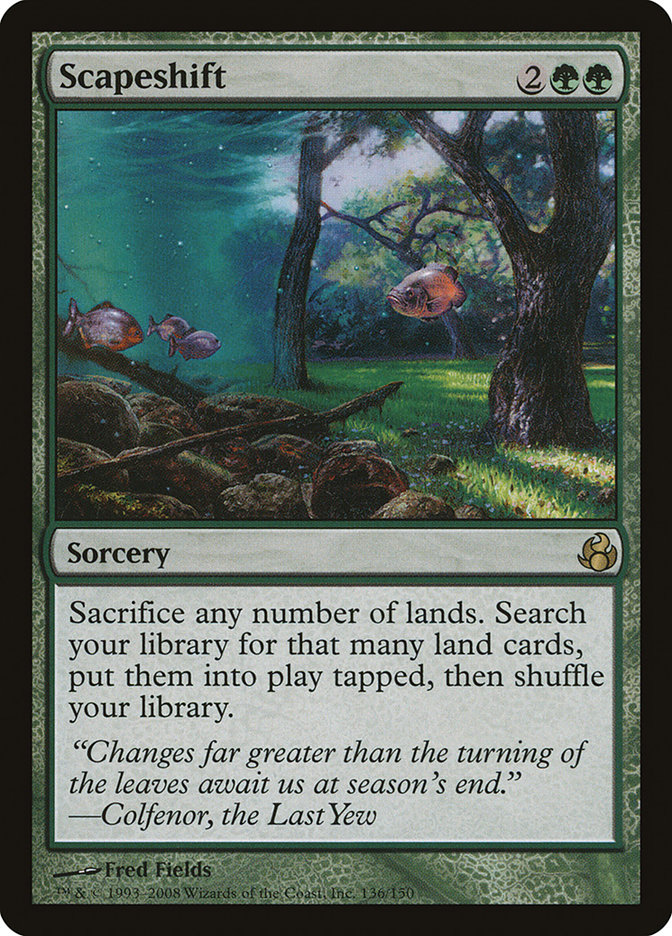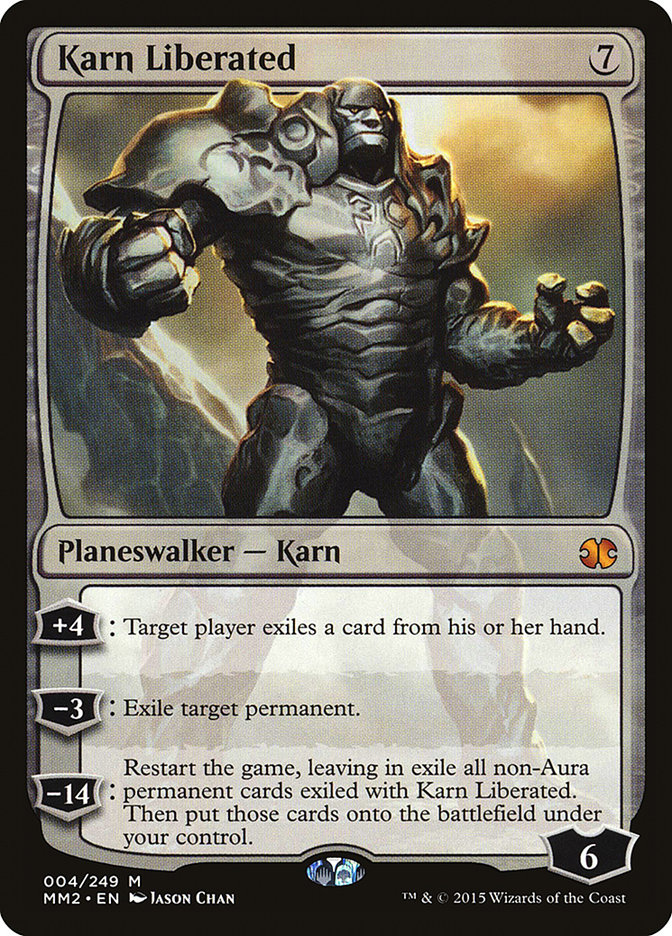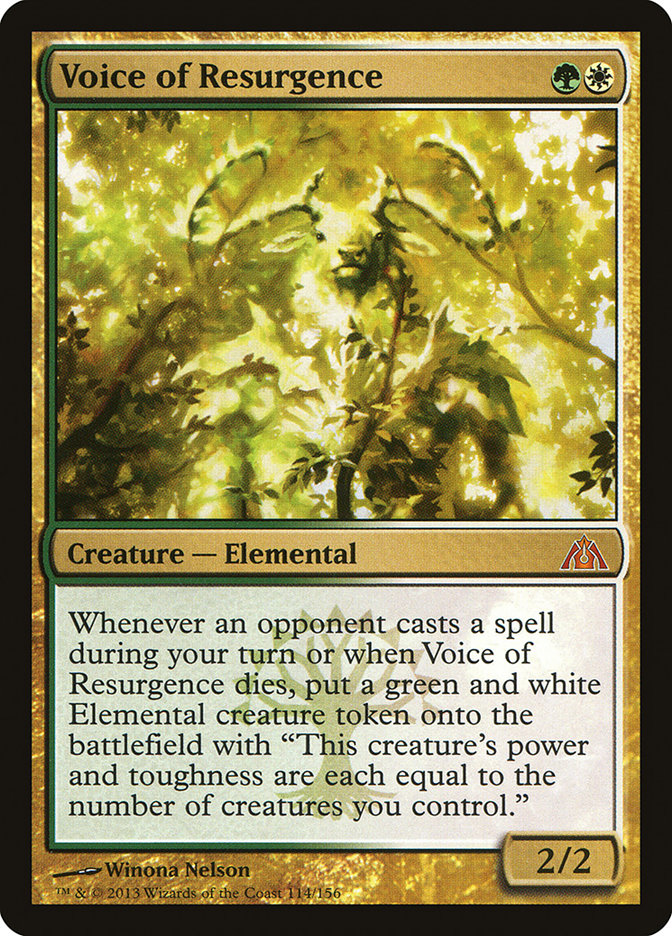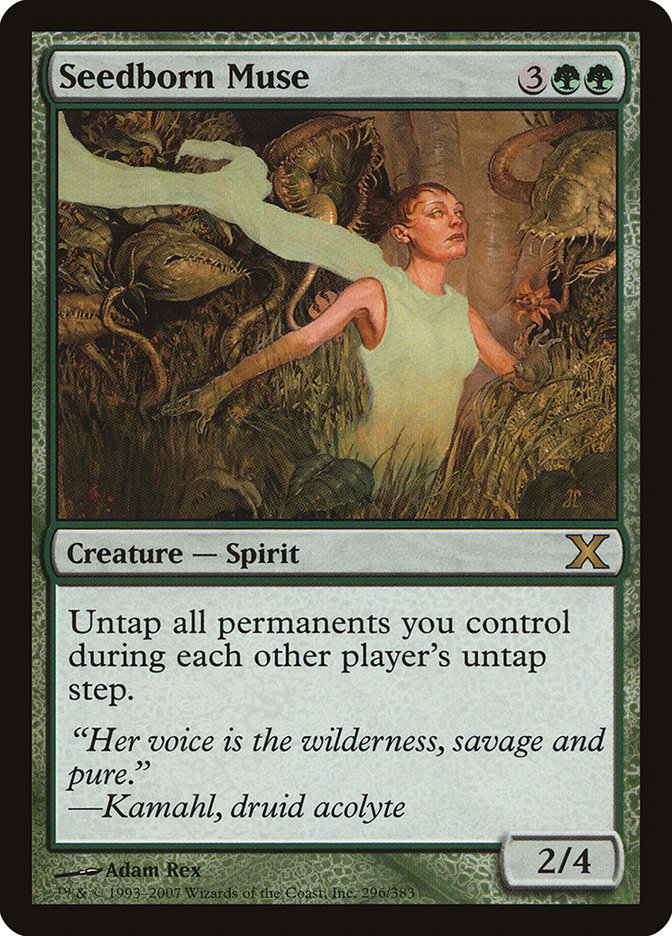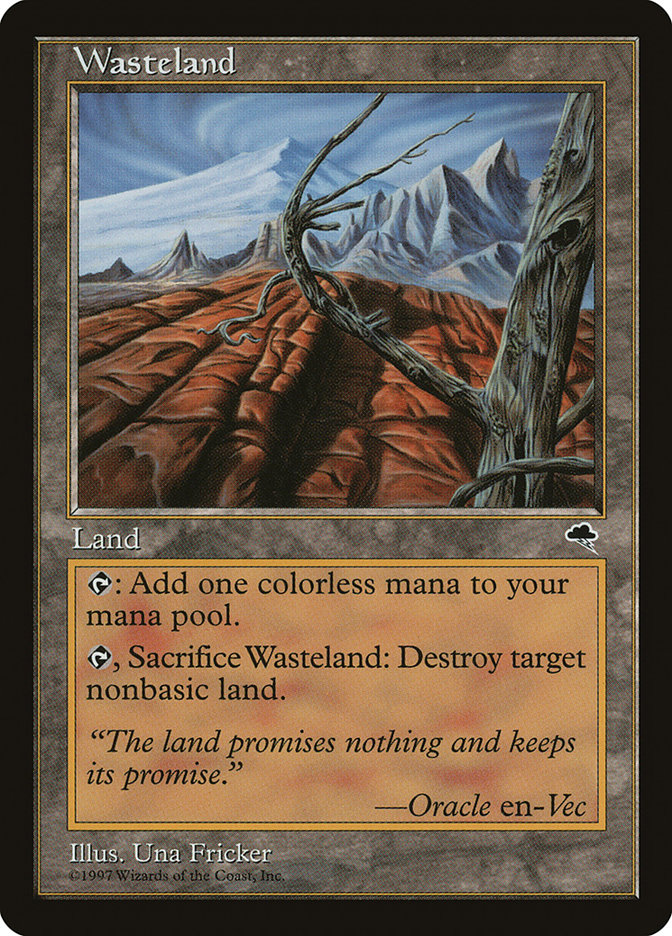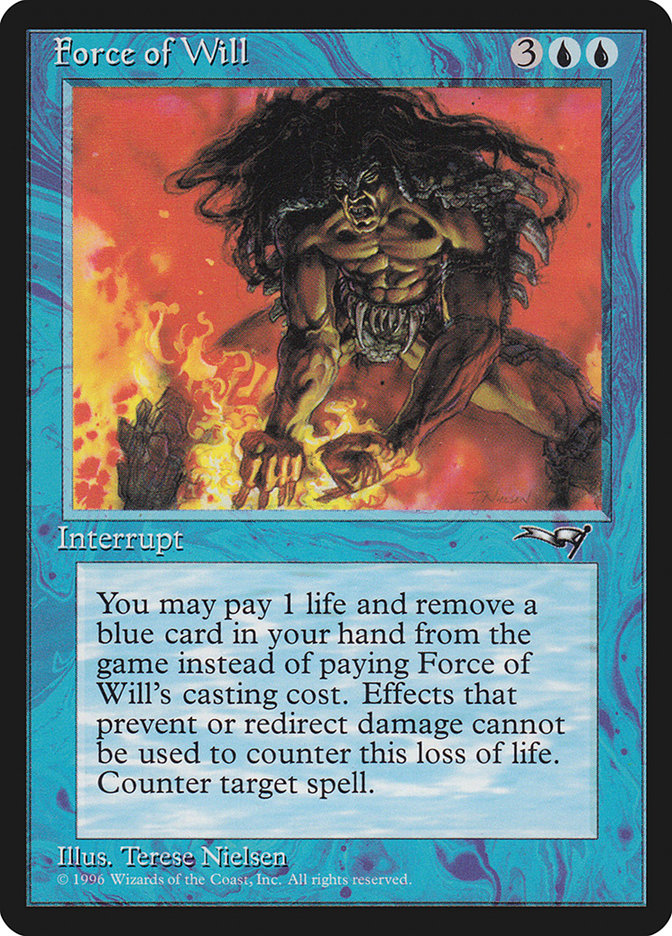Are you an experienced trader who owns multiple Modern decks? I’d like to ask a favor of you.
Find a player who hasn’t gotten to your level yet. Someone who plays a lot of Standard but hasn’t made the leap to Modern. Someone who is constantly lamenting the high financial barrier of entry to the Eternal formats. Someone you’d really like to play a game of Modern with…if only they could get their act together and build a deck. Someone who doesn’t think much about the finance side of the game. Encourage them to try out SCG Premium and show them this article.
Are you a frustrated Magic player who wants to build a Modern deck but can’t quite seem to get there? Do you keep throwing up your hands in frustration when you look at how much the staple cards cost these days? This article is for you.
Why Modern Costs So Dang Much
It’s no secret that Modern prices have been going nuts lately. Social media is full of discouraging rants about how price spikes make it impossible for newer players to break into Modern. With Scalding Tarn back at $100 and uncommons like Inquisition of Kozilek approaching $30, how can anyone afford to play? Why can’t Wizards of the Coast just saturate the market with cheap staples until everyone is happy?
You’re going to hear people on social media argue that WotC should saturate the secondary market with Modern cards because it wouldn’t really hurt their ability to sell Standard booster packs. That makes a certain amount of sense on the surface, but it ignores the fact that Modern value is part of what sells new cards.
Imagine you’re a Standard player and you’re on the fence about buying a booster box of Battle for Zendikar. You know that the set is full of powerful cards, but you’re not sure how much time you’re going to have to play Standard this spring, and besides, you love your already-completed Atarka Red deck. Knowing that cards like Ulamog, the Ceaseless Hunger, Oblivion Sower, and Painful Truths have a shot at being valuable Modern staples for years might push you over the edge toward that box purchase. If you knew that those cards would be reprinted every year until they held no value at all, you might instead opt to just buy the cards you needed for your Standard deck. Or, perhaps, the whole idea of spending so much money on Magic cards might start feeling pretty fruitless.
WotC is also counting on your positive experience with value growth over time to act as an encouragement for buying more product now. If you bought a lot of Innistrad boosters back in 2012, you’ve got to be pretty happy with the current price of some of the set’s staples, right? You might even wish you had spent more money on Innistrad cards back when you had the chance. And that past experience might encourage you to spend more money on Oath of the Gatewatch cards now.
You’ll read plenty of statements from people with large Modern collections saying things like, “I own multiple Tier 1 decks and I’d be thrilled of WotC re-printed every card in Modern until everyone could play.” That’s a commendable viewpoint—I also wish that Modern were more accessible—but it ignores the fact that WotC needs Modern cards to be valuable in order to keep packs moving out the door and the lights on in R&D. It’s fine to lament the lack of cheap Modern cards, but it’s an emotional dead end. If you want to change this, ask Congress to nationalize Wizards of the Coast and make access to Magic cards an inalienable right of citizenship.
Modern can’t be totally inaccessible either, of course, which is where the Modern Masters sets came in. By reprinting roughly 30% of the format’s biggest staples every two years, WotC has attempted to keep the prices reasonable (while selling yet more booster packs!) without tanking the market to the point where people would be skeptical about buying more cards.
By and large, this has been a successful endeavor. The only problem? Take a look at what’s happening in the market right now. We’re seventeen months away from the next Modern Masters set, which means that there’s very little risk of immediate reprint if you’re buying a card like Scapeshift or Spellskite. Enough players and speculators have figured that out to create an economy that is bullish to the point where a single article or camera appearance can send a card soaring. From an outside perspective, this is very frustrating. How do you know which cards to buy? Which cards to sell? How can anyone buy into Modern when the market is acting like this?
Finding A Way In
You need one virtue above all when buying into Modern: patience.
If you’re willing to be patient, everything else will fall into place. Keep that in mind as you read the rest of this article. And during the next trade you make. And, ideally, for several months after that. Don’t lose sight of your goals, even if they take time to achieve.
The biggest mistake people make when getting into Modern is treating it like Standard, where you can buy into a deck overnight and switch up your strategy every month. Pro players can do this, and rich players can do this, but if you’re reading this article, you probably can’t do this.
It’s frustrating, because you’re probably used to being on the privileged side of the “I can afford to play this game” divide when it comes to Magic. We all have our own financial limits: for some, Standard is out of reach. For most of us, Modern is a bridge too far. Accepting this fact is difficult. It can be frustrating or embarrassing, especially if you have friends who can buy Modern staples without batting an eye. But if you really want to play Modern, you’re going to have to come to terms with whatever your financial limitations are. You’ll eventually get to where you want to be, but it’s going to take time and it’s going to take patience.
Luckily, you have a secret resource available to you: the unused part of your existing Magic collection. If you’re anything like me, you’ve got a couple of half-full trade binders, some boxes filled with partial decks that you don’t play anymore, some draft chaff with gold mixed in, and a few causal decks that you haven’t played in far too long. Quick: how much are all of these cards worth? $200? $300? $1,000?
Grab all that stuff and put it in a stack next to your desk. Pull up the StarCityGames.com website and start looking up the price of every card that you’re unsure of. Throw the numbers in a spreadsheet. Make sure that all the cards with real trade value end up in a single stack. Listen to podcasts while you work if you get bored. At the end, run a formula and see how much potential value you’ve got tied up in cards you aren’t using right now. My guess is that the number will be at least 40% higher than your off-the-cuff estimate. Some cards you had pegged for the bulk bin are $10 Commander staples now. Use this to your advantage.
At this point, you need to figure out your strategy for breaking onto Modern. As I see it, you’ve got four choices:
Pick the cheapest good deck out there and build it. Go to the Modern Deck Database on StarCityGames.com and you’ll be able to see the winning decklists from the past few months. Find something that looks cheap and successful. This is the best way to start playing Modern right away, but it could leave you spending the bulk of your resources on a deck that you don’t actually enjoy piloting. At the very least, make sure the deck will play in your local metagame.
Pick the deck you already have the most pieces for and build it. Maybe you’ve already got a set of Zendikar fetchlands, or you saved your playset of Liliana of the Veil, or you cracked two Tarmogoyfs in Modern Masters, or you tried to build Affinity last year and abandoned the project halfway through. This might be another easy way into Modern, depending on how many pieces you’ve already got. It might also lock you into a deck you don’t really like. Be careful.
Pick the Modern deck you most want to play and start building it. This will take longer than options 1 or 2, but it will probably prove more satisfying in the end. Unless you have a strong pull toward one of the other options, this is the path I recommend.
Start building a collection of universal Modern staples. Many people choose this option without thinking, and it’s usually incorrect. If you’re a serious Modern player, you’ll eventually need access to as many of these cards as possible. But that’s not the right place to start. First off, it means that you aren’t going to want to trade away any Modern cards you acquire, even if the trade would get you closer toward building your primary deck. Second, it’s going to feel emotionally exhausting every time a staple you don’t have yet ends up in a price spike.
Instead of starting with a broad, nebulous goal like this, I recommend starting with a single deck and then acquiring all the other pieces you might want to use to modify it. Once you’ve got that down, consider broadening your horizons to Modern at large.
Learn the Trends
Don’t forget: Modern is not designed to be a “buy in over the weekend” format. Modern is WotC’s premier non-rotating format, and it’s meant to encourage players not to sell their favorite cards through Standard rotation so that they’ll have another place to use them. If you’ve been playing Magic for many years, you probably already have a stack of Modern-playable cards you can either use toward your deck or toward trading for your deck. If not, take a look at what I said about patience in the last section of this article and Sharpie it onto the back of your hand. Patience needs to be your mantra.
The thing about Modern is that the prices are only surprising if you’re looking at the small picture. If you ask me to predict the price of a single card over the next two months, I’m going to get it wrong more often than I’d care to admit. If you ask me to predict the price of a group of cards over the next two years, I suspect I’ll be able to draw you a fairly accurate graph. You can use this to your advantage.
First, know your seasons. January through April tends to be Modern high season, and February/March is generally when Magic cards across all formats are at their seasonal highs. This might change a little with the new set rotation economics, but I doubt it. During this part of the year, you want to avoid buying Modern cards.
Modern cards also tend to spike whenever there are multiple major Modern events in close proximity with each other. A Modern Pro Tour always does it (the next is Pro Tour Oath of the Gatewatch in Atlanta on February 5th), but so will, say, a Modern Grand Prix or an SCG Tour® Modern Open. Be aware of upcoming events when making purchases.
Modern also tends to jump whenever Modern is a PPTQ format. The next time this happens will be the PPTQ window between July 16th and October 9th, so expect a late summer bump in the Modern index.
Last, a Modern Masters set release always causes massive demand for Modern staples that are not reprinted. There won’t be a Modern Masters set released in 2016, so you don’t have to worry about this for a while.
When are Modern prices depressed? The holiday season each year always tends to be the low point, because very few people are playing Magic in late November and December. Modern prices can also drop during the first few weeks after every large set release, because the focus of the Magic world is focused on Standard. Modern also tends to be undervalued during the late summer doldrums, but I expect that not to be the case this year thanks to PPTQ season.
The best time to buy Modern cards isn’t seasonal, though—it’s when they’re sitting in their reprint trough. This occurs about two or three months after a major reprint in Modern Masters, a core set, or a Commander/supplemental product. As long as a card is still good in Modern and it hasn’t become the major focus of a Standard deck, there’s a good chance you’re going to get a couple of months where buying in will be cheap and easy. Look at what happened to Wurmcoil Engine after the Commander 2014 reprint, or Arcbound Ravager after the first Modern Masters expansion. Regardless of what your Modern plan looks like, buying cards during these brief downturns is almost always a good idea.
Whenever you make Modern trades, keep this big picture knowledge in your back pocket. When the Modern tide is high, try to avoid trading for the cards you need unless the price is right. When the Modern tide is low, be aggressive and make sure you’re willing to pay a little more to make deals happen.
Dodging the Bans
The only thing more frustrating than having your favorite Modern deck banned? Having a deck you’ve spent the better part of a year trying to build pulled out from under you before you’ve had the chance to play a single game. The overall thesis of this article is something like, “treat Modern like Legacy, not like Standard,” but this belies the uncomfortable truth that Modern will always be something of a rotating format as long as WotC keeps banning decks that stick around too long.
If you look at the overall picture of how Modern has been treated over the past five years, bannings haven’t played that large a role. We’ve lost five cards that hurt (but didn’t kill) their decks, two cards that led to the death of their namesake decks (Second Sunrise and Birthing Pod), and two cards where the jury is still out. Those aren’t terrible odds.
I’m not quite sure how much stock we should put into a list like this, though. At the risk of succumbing to recency bias, the Splinter Twin ban looms large in how I want to approach Modern right now. As long as we’ve got a Modern Pro Tour on the schedule and WotC feels the need to shake up the format every year, no top deck is safe. It really does seem like WotC’s philosophy has changed from “only ban a card if it has proven too degenerate” to “ban one or two of the best cards every year.”
This sort of B&R policy hurts patient deckbuilders the most. This time last year, Splinter Twin looked like one of the safest decks in the format—powerful but not degenerate, and likely to be good for years to come.
This should not dissuade you from a slow and methodical approach to Modern, however. Most decks don’t get banned, and there are steps you can take to lower your odds of finding yourself on the wrong end of WotC’s big hammer:
Pay Attention to Pro Tour Results: The top four decks in last year’s Modern Pro Tour were Splinter Twin, Splinter Twin, Amulet Bloom, and Abzan. WotC specifically cited this tournament in their decision to ban Splinter Twin. If WotC bans another surprising card in January 2017, I suspect it’ll have made a splash at this year’s Modern Pro Tour.
Be Careful of Decks that Can Win Prior to Turn 4: WotC’s “turn 4” philosophy is still an important part of how they regulate Modern, and they’ve banned Tier 2 combo strategies before. Don’t fall victim to this if it’s going to take you almost a year to put your deck together.
Pay Attention to Ban Season: Historically, WotC has only made their shake-up bans in January. I don’t see why this trend wouldn’t continue to hold, and you don’t really have to worry about this fear for nine or ten months out of the year. If your deck is heavily rumored to be heading for a ban in November or December, sell or trade the pieces ASAP.
Be Wary of Decks That Revolve Around a Single Card: If you’re really scared of a ban, watch out for decks that will fall apart if a single card is banned. “Fair” decks like Jund, Abzan, Burn, etc. can live on without a powerful spell or two. Decks like Pod, Twin, Tron, etc. fall apart without access to their namesake card(s).
Feel free to ignore this last piece of advice if the allure of the deck you want to build outweighs your fear of a ban, but if you really want to treat Modern like an Eternal format instead of a rotating one, you’re going to have to find a decklist filled with as many cards as possible that are generically good. Staples like this tend to be more expensive, but they’re much more likely to maintain their relevance after a major ban. Do you think Snapcaster Mage will be unplayable now that Splinter Twin is gone? I sure don’t.
Get Specific
Now that you know the big picture, it’s time to look small. I like to take a deck I’m working toward and attempt to figure out what the future of each card is likely to be. That way, I can prioritize my pick-ups based on their potential financial future.
Let’s use Brian Huffman’s Jund deck from the SCG Tour® Modern Open on January 9 as a test case:
Creatures (13)
Planeswalkers (3)
Lands (24)
Spells (20)

I’m not going to worry about the sideboard cards for now—that should mostly depend on your local metagame anyway. Here’s what I wrote about all of these cards about two weeks ago, before the Twin/Pod bannings:
· Tarmogoyf – $159.99. Printed in Future Sight, MM13, and MM15. Stable.
· Liliana of the Veil – $99.99. Printed in Innistrad. Trending up.
· Verdant Catacombs – $59.99 (sold out). Printed in Zendikar. Trending up.
· Dark Confidant – $44.99. Printed in Ravnica, MM13, and MM15. Stable/trending down.
· Blackcleave Cliffs – $25.99. Printed in Scars of Mirrodin. Just spiked.
· Inquisition of Kozilek – $24.99 (sold out). Printed in Rise of the Eldrazi. Just spiked.
· Thoughtseize – $22.99. Printed in Lorwyn and Theros. Stable.
· Bloodstained Mire – $22.99. Printed in Onslaught and Khans of Tarkir. Stable/trending down.
· Wooded Foothills – $22.99. Printed in Onslaught and Khans of Tarkir. Stable.
· Kolaghan’s Command – $17.99. Printed in Dragons of Tarkir. Trending up.
· Abrupt Decay – $14.99. Printed in Return to Ravnica. Stable/trending down.
· Maelstrom Pulse – $11.49. Printed in Alara Reborn and MM13. Trending up.
· Olivia Voldaren – $10.85. Printed in Innistrad. Trending down.
· Stomping Ground – $10.49. Printed in Guildpact and Gatecrash. Trending up.
· Raging Ravine – $10.49. Printed in Worldwake. Stable/trending up.
· Kitchen Finks – $9.69. Printed in Shadowmoor and MM13. Stable.
· Overgrown Tomb – $8.29. Printed in Ravnica and Return to Ravnica. Stable.
· Blood Crypt – $7.79. Printed in Dissension and Return to Ravnica. Stable.
· Scavenging Ooze – $7.49. Printed in Commander 2011 and M14. Stable/slight trend upward.
· Pia and Kiran Nalaar – $2.99. Printed in Magic Origins. Trending up.
What cards should you prioritize? First, let’s take a look at everything that was printed in Modern Masters 2015. In this deck, it’s only Tarmogoyf and Dark Confidant. Neither of these cards has started to rise in price again, but we know that they’re currently in their reprint trough and we’re over a year away from the next Modern Masters set. You might not need to buy in this week or next, but you should keep these cards fairly high on your priority list. It’s also good to know that they haven’t seen the same kind of recent price increase that, say, Spellskite has, so you’re not paying a seasonal “high tide” fee when you buy in.
Now let’s look at the cards that are Standard-legal. There are actually a few here: some fetchlands, Kolaghan’s Command, and Pia and Kiran Nalaar. Most Standard cards lose some value at rotation, even ones that are good in Modern, but you’ll find that it is more difficult to trade for these cards once people start thinking about them as Modern staples instead of Standard staples. If you can get these in trade now for other Standard rares, you should do so, even if it means paying a little bit of a premium.
After that, move on to the non-Standard cards that have only been printed in one set. These cards are a bit of a double-edge sword—they’re the cards most likely to spike in price, but they’re also the most likely cards in the deck to be reprinted soon. In Jund, there’s Verdant Catacombs, Blackcleave Cliffs, Inquisition of Kozilek, Abrupt Decay, Olivia Voldaren, and Raging Ravine. Scavenging Ooze is on the list too, as long as you don’t count the tiny Commander 2011 print run.
If a card in this category has just spiked, I recommend ignoring it for as long as you can—spiked cards generally come back to earth sooner or later, and it also means that WotC is more likely to consider it for an upcoming reprint. If you still need Inquisition of Kozilek for your Jund deck, for example, I’d wait until long after I had my ‘Goyfs and Bobs.
On the other hand, single-printing rares that haven’t spiked yet should be a high priority for you. Abrupt Decay, Scavenging Ooze, Olivia Voldaren, and especially Raging Ravine are at risk of either a finance-driven or real-world-demand buyout. If you’re building Jund and you want to have it ready this year, you’ll want to get those cards as soon as you can.
Beyond that, it’s best to play the trends. Most spikes are easy enough to see coming—if a card is trending upward for a couple of weeks, it might be ready to pop. Stay on cards like Stomping Ground, Liliana of the Veil, and Maelstrom Pulse to make sure you don’t miss the boat. Prioritize them over cards that are being mostly ignored right now, like Thoughtseize and Overgrown Tomb.
The problem with moving slowly, of course, is that prices can change quickly in the wake of a major ban or major tournament. In the ten days since I wrote my analysis, Raging Ravine spiked and we’ve seen small gains from Dark Confidant, Tarmogoyf, Liliana of the Veil, Olivia Voldaren, Maelstrom Pulse, Blackcleave Cliffs, and Kitchen Finks. More people are moving in on Jund since it feels like a fairly safe deck at the moment. Instead of re-writing my analysis, I kept it as-is for this section in order to prove my point: single set cards need to be picked up right away, and the staples from Modern Masters 2015 are about to move in a serious way.
The Grind
Now that you have a goal and you know what your priorities are, it’s time to get to work. Building a Modern deck is a major purchase, but the fact that the investment can be made one card at a time means that everyone is capable of getting there eventually.
Your first priority should always be trying to get cards in trade, preferably for Standard staples. Many traders demand a small premium when trading Modern cards for Standard, and it’s totally fine to “lose value” if you’re helping your deck. As long as your trade is a better deal than selling your card (at less than retail) and using the cash to buy whatever you’re getting in return, it’s at least worth considering. Figure out who at your shop has the cards you’re looking for. Figure out what they want in return. Try to make it happen.
Beyond that, it’s all about trying to find ways to buy the cards you want as inexpensively as possible. There are only two ways to do this: find a way to get the cards cheaper, or find a way to make more money.
The first one is fairly easy. Play those seasonal trends. Watch out for sales—SCG always has good ones around the holidays and in early September, when prices are already low. Buy the cards you need when the price is right, not at the apex of a spike or the night before an event.
Regular readers of this column should have a good idea of how to make more money. Smart speculation, flipping collections, buylisting unneeded cards, and making trades with an eye on the long haul are my favorite methods.
If you’re not sure where to begin, try this: put together a binder with a few hundred dollars’ worth of extra rares. This shouldn’t be too hard for anyone who has been playing Magic for a year or two. Only use this binder for one of two purposes: trading for cards for your aspirational Modern deck, or trading for cards that you think are undervalued and believe that you can flip in order to help your Modern deck eventually. If a card isn’t trading locally, trade or sell it online—even if it’s at a loss—and get something you need. If you keep your goals slim and focused, the process will go much more quickly.
Last—and I realize that I’m contradicting an earlier point I made about not building too broad a Modern collection too soon—take advantage of great opportunities when you see them. One of the mantras espoused by the guys on American Pickers is that the best time to buy something is when you see it. If you wait, it’ll be gone. I agree—if, for example, you can get a killer deal on a pair of Thoughtseizes but you really want to build Affinity, make the trade and hold onto them as part of your Modern collection. As long as these sorts of deals don’t keep you from working toward your primary deck—which needs to be your main goal—you should always take advantage of a bird in the hand.
This Week’s Trends
The Modern index continues to rise, with practically every non-banned card getting in on the action. Crucible of Worlds; Fulminator Mage; Kiki-Jiki, Mirror Breaker; Raging Ravine; Scapeshift; Stony Silence; Inkmoth Nexus; Karn Liberated; Glimmervoid; Eye of Ugin; Urborg, Tomb of Yawgmoth; Oblivion Stone; Goblin Guide; Voice of Resurgence; Restoration Angel; Noble Hierarch; and Goryo’s Vengeance were the biggest winners among cards in established decks.
Copperline Gorge is trending up as Modern R/G Tron players look for a budget alternative to Grove of the Burnwillows. I wouldn’t be shocked if Karplusan Forest starts heading in that direction as well.
Boom // Bust saw a nice spike as well, thanks to a sweet-looking Modern deck that’s started to make the circuit online. If you’re looking for other cards from that deck that might make a move, Loxodon Smiter and Scavenging Ooze are both worth a look.
Tendo Ice Bridge also spiked this week. It has started to see play as a four-of in some B/x Eldrazi decks, where it acts as one of the better colorless mana producers.
Restoration Angel saw a large spike online as many Twin players continue to audible into Kiki Chord decks. If this spike translates to paper Magic, many of the other cards in that deck could be next.
Esteemed Odyssey bulk rare Mindslicer also spiked this week. I’ve yet to hear a good reason for this to happen. Meren of Clan Nel Toth Commander, maybe? I’d ignore this one – seems like a single speculator buyout to me. Sell into the spike if you have any of these kicking around in your bulk.
There were a few casual spikes last week as well. Consecrated Sphinx, Seedborn Muse, Sen Triplets, and Palinchron all saw significant upward movement. Seedborn Muse’s spike is likely due to the banning of Prophet of Kruphix in Commander—if you’ve got a stack of those sitting in your spec box, I’m really sorry—though I suspect most decks that ran Prophet already had a copy of Seedborn. Sen Triplets rose in price thanks to a change in the Commander rules—you’re now allowed to produce mana outside your color identity to cast cards out of other people’s hands with cards like Sen Triplets or to activate abilities of permanents you steal, etc. Nightveil Specter and Praetor’s Grasp are both better in Commander as a result, as are the five-color mana rocks like Coalition Relic, Fellwar Stone, and Chromatic Lantern.
There have been online rumors that the summer set will be another reprint set called Eternal Masters. It’s a very unsubstantiated rumor, and I wouldn’t pay it too much mind yet. It’s also unclear what the point of Eternal Masters would be—a Legacy/Vintage supplemental set? A set designed to support a new format called “Eternal” designed to somewhat replace Legacy, but without any Reserved List cards? I’ll get into this stuff more if the rumors end up panning out, but it’s still far too early for any speculation to be useful.


